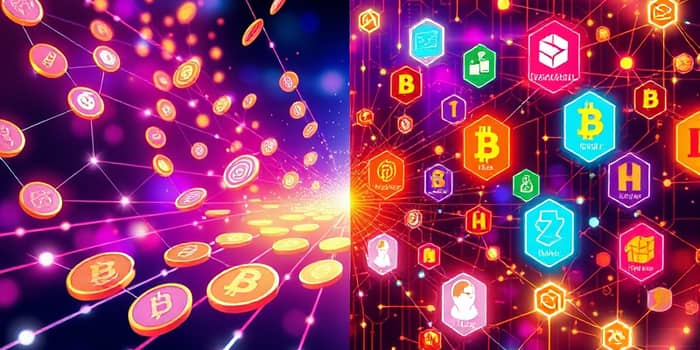
In the ever-evolving landscape of blockchain technology, token standards have emerged as fundamental pillars shaping the way we represent value and ownership on Ethereum. From decentralized finance to digital collectibles, these frameworks enable developers to mint assets with confidence, security, and interoperability.
By exploring the mechanics behind ERC-20 and ERC-721, we unlock not only technical insights but also the potential to revolutionize industries. Each transaction recorded on the blockchain tells a story of innovation, collaboration, and trust.
Whether you are a developer, entrepreneur, or enthusiast, understanding these standards is key to unlocking new opportunities. With clear guidance, you can harness the power of tokens to drive meaningful change.
ERC-20 stands as the most ubiquitous Ethereum token standard, powering fungible assets that are interchangeable and identical to each other. It prescribes a concise set of functions—totalSupply, balanceOf, transfer, transferFrom, approve, and allowance—that ensure tokens behave predictably across wallets, exchanges, and smart contracts. This simplicity has driven wide adoption due to ease of implementation, making ERC-20 the backbone of countless projects.
In contrast, ERC-721 introduces the concept of non-fungible tokens (NFTs), where each token carries a unique identifier and metadata. This standard enables developers to create, manage, and trade singular digital assets with transparent provenance. Core functions such as ownerOf, tokenMetadata, and tokenOfOwnerByIndex allow precise control and enumeration of individual tokens.
For developers, ERC-20 offers streamlined contracts and established integration points, while ERC-721 requires careful design of metadata storage and event handling. Both standards follow a clear interface, ensuring that third-party tools and marketplaces can interact seamlessly with compliant tokens.
At their core, ERC-20 and ERC-721 diverge in purpose and complexity. ERC-20 focuses on ensuring compatibility and interoperability across platforms, while ERC-721 emphasizes creation and management of unique digital assets. These philosophies give rise to distinct technical features:
ERC-20’s limited scope simplifies gas estimation and contract auditing, while ERC-721’s complexity demands nuanced handling of unique IDs and metadata. Developers often rely on established libraries and frameworks to reduce risk and speed up deployment.
The ecosystem surrounding these standards includes tools for token minting, wallets for secure storage, and marketplaces for trading, reflecting their enduring impact on the Ethereum network.
The adoption of ERC-20 and ERC-721 has catalyzed a spectrum of use cases, transforming abstract code into tangible value. Together, they form the backbone of DeFi protocols, digital art marketplaces, gaming ecosystems, and beyond.
From micro-collectibles to high-value property deeds, both standards have unleashed a wave of innovation, empowering creators and investors to engage in a more open economy.
While ERC-20 excels in simplicity and widespread adoption, ERC-721 paves the way for digital scarcity and provenance, each standard addressing different project requirements.
Looking ahead, emerging enhancements aim to optimize gas usage, improve batch operations, and standardize metadata structures, reflecting the community’s commitment to continuous improvement.
Selecting between ERC-20 and ERC-721 hinges on the nature of the asset you intend to represent. For fungible tokens such as currencies, reward points, and governance rights, ERC-20 remains the standard of choice. When dealing with collectibles, digital art, or any asset requiring unique identification, ERC-721 provides the necessary framework.
Projects with hybrid needs—such as gaming platforms where both currencies and unique items coexist—might consider ERC-1155. This versatile standard offers efficient batch transfers and flexible asset management, combining fungible and non-fungible capabilities in a single contract.
Implementing any token standard requires rigorous security audits, gas optimization strategies, and adherence to best coding practices. Engage with developer communities, participate in testnets, and leverage audited libraries to mitigate risk and accelerate time to market.
By aligning technical choices with user expectations and business goals, you can craft token experiences that resonate with your audience and stand the test of time.
Embrace the spirit of decentralization. Whether you are launching a new crypto-asset or a vibrant NFT ecosystem, your choices contribute to the broader narrative of human progress in the digital age.
The journey into token standards is not merely a technical endeavor—it is a voyage into the heart of a transformative movement. Each line of code you write, every token you mint, carries the potential to reshape industries, empower communities, and redefine ownership. Equip yourself with knowledge, collaborate openly, and let your innovation be guided by the principles of transparency and inclusivity.
References













